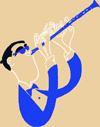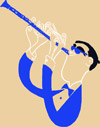|
|
|
Musicians Traveling During World War IIHere is an interesting article from Life magazine, March of 1942. At this time the best way for musicians to travel was by train. However during World War II most of the available railroad rolling stock was being used for the war effort, creating a shortage for domestic travel. Many of the great Big Bands used be able to charter their own train to go on tour (Cab Calloway, Duke Ellington). But during the war years it was impossible to obtain the first class Pullman (sleeping cars) for musicians to travel in. This article shows how the musicians of the Philadelphia Orchestra traveled during their US tour. All of the private-room sleeping cars were called into military service, so the Philadelphia Orchestra had to use the old-time “open section” sleeping cars from the 1920s. Basically this 75-foot passenger train car had a dozen or so sections that made up into beds at night. An upper berth made up an additional bed upstairs (upper berths of course were cheaper since they did not have a window like the lower). The Pullman Porter would turn the car from a day-use coach accommodation to the overnight sleeping accommodation while passengers dinned on a delicious meal in the dining car (yes railroads took great pride in serving excellent meals that rivaled the best restaurants). Privacy was achieved in these berths by pulling the heavy curtains closed when one turned in for the night. To get a feel for this type of sleeping arrangement watch the movie 42nd Street (1932) during the “Niagara Limited” scene — or the humorous film Berth Marks (1929) starring Stan Laurel and Oliver Hardy. By the 1930s this open-section sleeping car fell out of favor for the new private-room trains, which offered roomettes and slumber coaches — no more canvas curtains — with real walls and doors instead. But when WWII hit, every type of railroad car that could roll was called into service. Thus the funny photo of the musicians of the Philadelphia Orchestra poking their heads out of the old-time open section sleeper berths in 1942! Ok, there was one BIG exception — the conductor of the orchestra, Eugene Ormandy, did get his own private drawing room on the train! 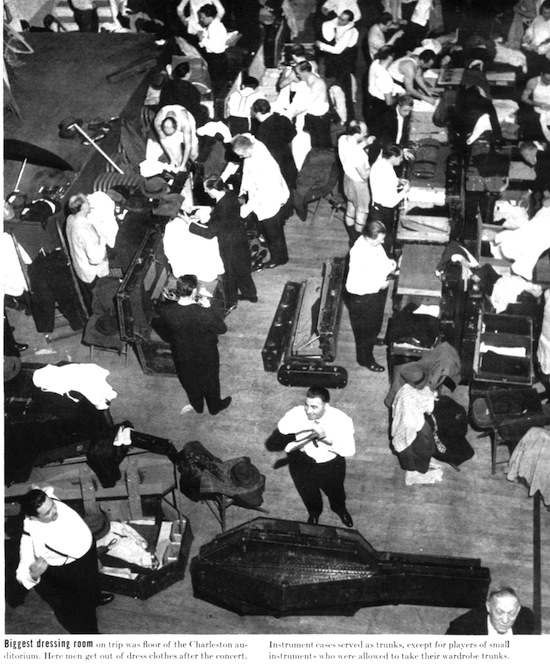 |
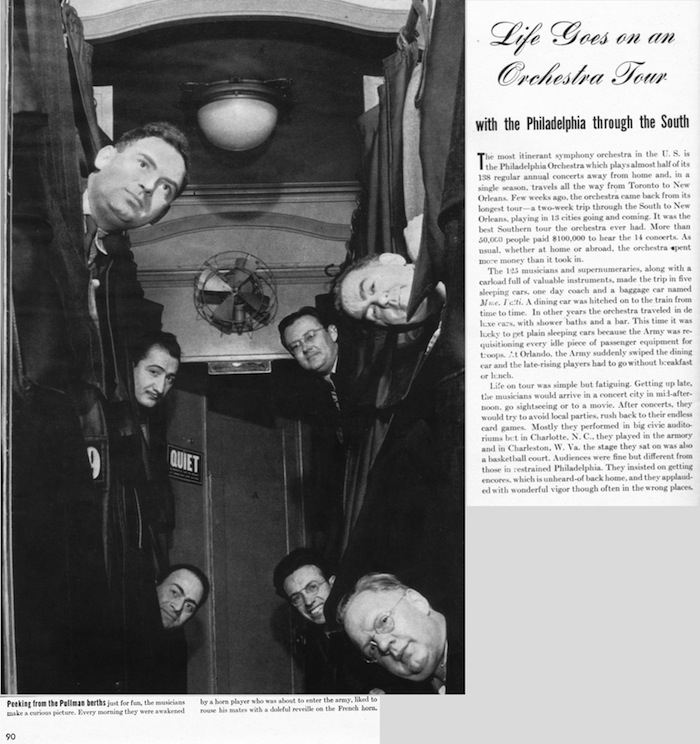 |
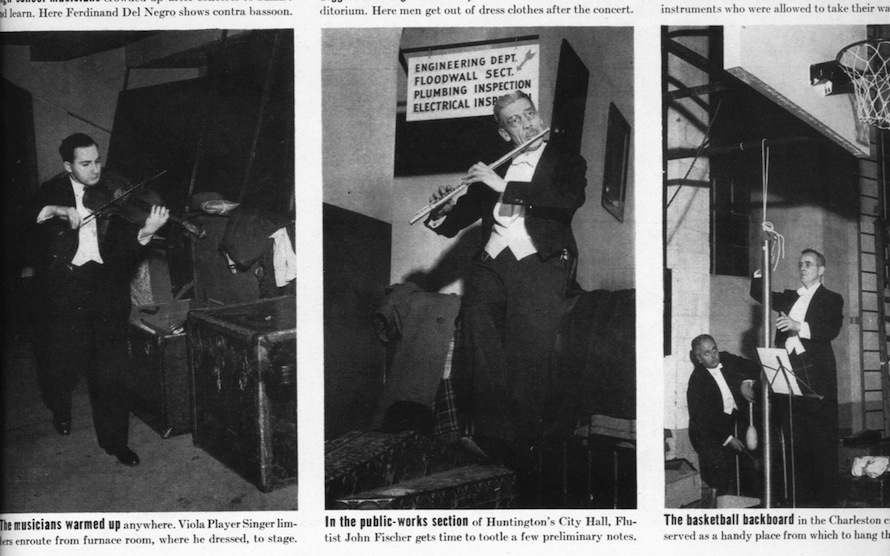
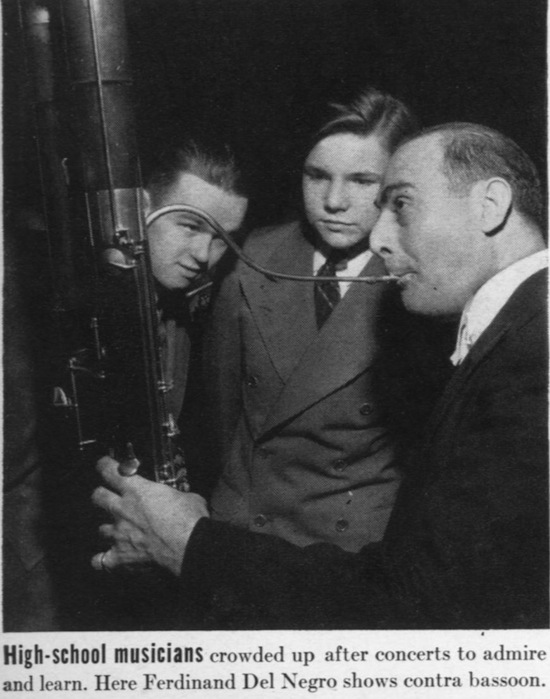
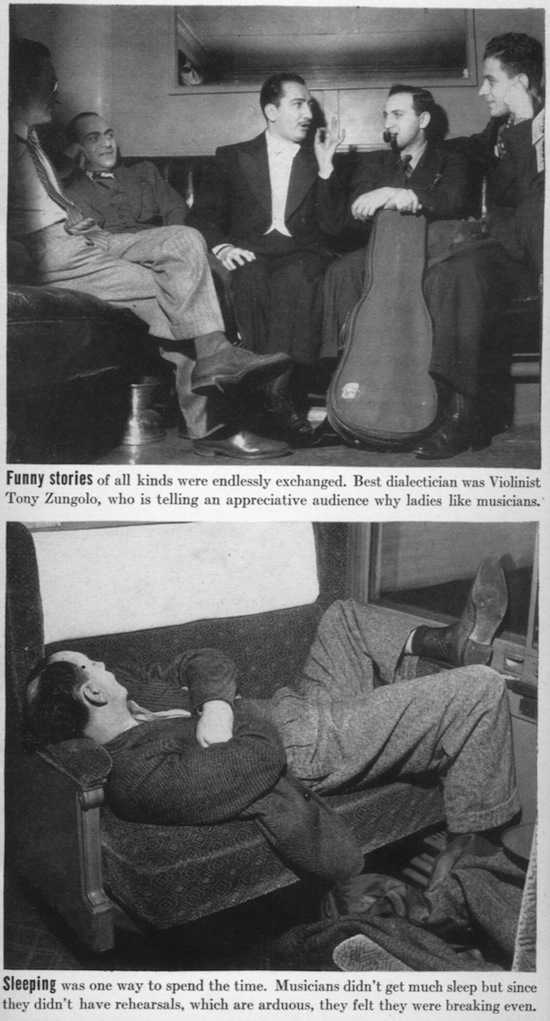
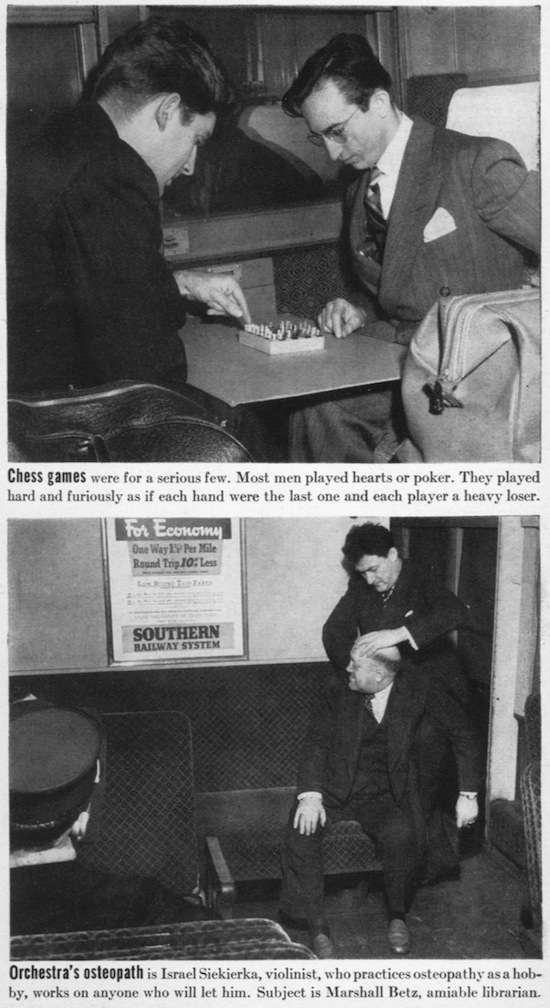
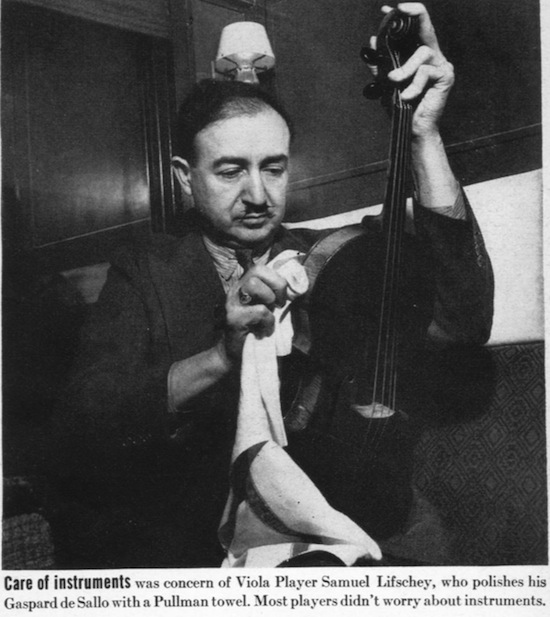
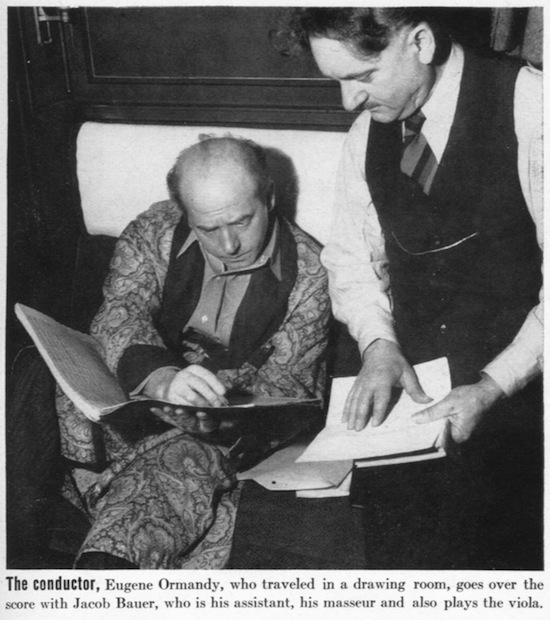
|
